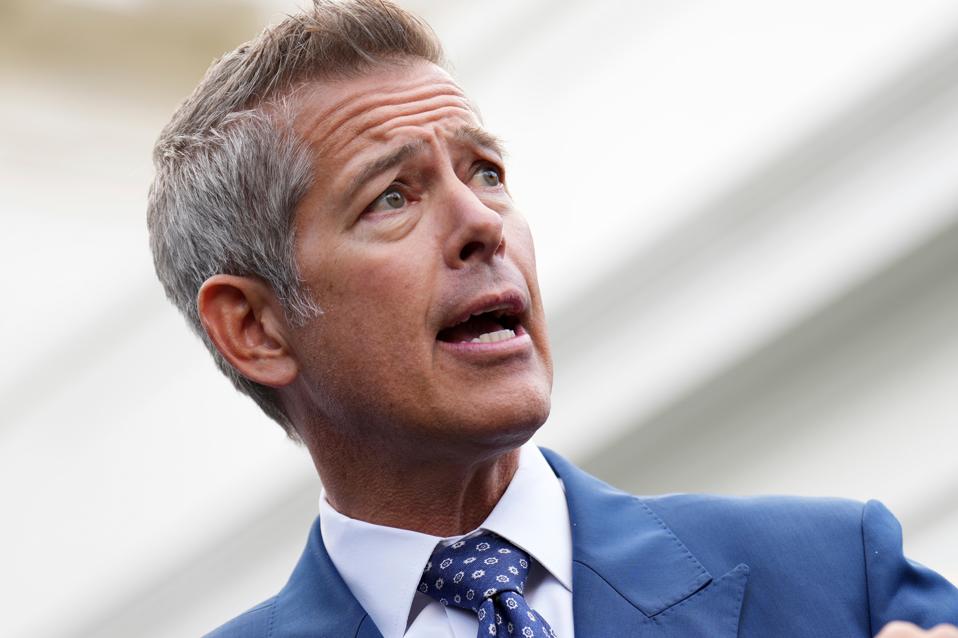Topline
Transportation Secretary Sean Duffy warned Tuesday that U.S. air travel would see “mass chaos” if the government shutdown goes on another week—and that he might be forced to shut down parts of the airspace.
Key Facts
The U.S. airspace will see “mass chaos” if the government shutdown continues into next week, Transportation Secretary Sean Duffy told reporters at a press conference Tuesday, adding he might eventually be forced to shut down the airspace in certain parts of the country.
Nearly half of all major air traffic control facilities are facing staffing shortages, according to the Federal Aviation Administration (FAA).
Air traffic controllers “can deal with missing one paycheck, but none of them can miss two paychecks,” Duffy told CNBC’s Squawkbox Monday.
Even before the shutdown began on Oct. 1, the average controller was working six 10-hour days a week with just four days off every month, Nick Daniels, president of the 19,000-member National Air Traffic Controllers Association (NATCA), told Forbes.
When Will Air Traffic Controllers Miss Their Second Paycheck?
Having received their first “zero paycheck” on Oct. 28, air traffic controllers are set to miss their second paycheck on Tuesday, Nov. 11, and will receive their backpay shortly after the government reopens and funding is restored. “At the end of this week, air traffic controllers are going to get a pay stub email that’s going to tell them how much they’re going to be paid next week, and that’s going to be zero,” Duffy told CNBC, walking back a previous threat to fire controllers who did not report to work. “I’m not going to fire air traffic controllers who are trying to put food on their family’s table. I am asking all of them to come to work … I’m pleading with them to get into the towers and the facilities across the country and keep our airspace operational.”
Surprising Fact
The betting platform Polymarket is predicting the shutdown will end on Nov. 12—one day after controllers miss their second paycheck—which is a full three weeks earlier than it was predicting Monday.
Have Air Traffic Controller Sick Calls And Absences Escalated During The Shutdown?
There has been a steady escalation of absenteeism since the shutdown began. This past weekend, the FAA saw nearly 100 staffing triggers—alerts indicating an insufficient number of controllers—the most seen during the shutdown. A single advisory issued at 7:46 p.m. EDT on Friday evening listed 39 staffing triggers.
Is It Safe To Fly During The Shutdown?
Duffy has repeatedly stressed that the FAA will stop flights if there is an insufficient number of controllers. “You see more delays, you see more cancellations of flights, and that’s because we slow traffic down because we don’t have enough controllers in the towers and TRACONs (Terminal Radar Approach Control facilities) to make sure we can navigate the flights,” Duffy said. “Is there more risk in the system when you have a shutdown? Absolutely, there’s more risk. But if we thought that it is unsafe, we will shut the whole airspace down. We won’t let people travel. We’re not there at this point. It’s just significant delays.”
How Else Are Flight Disruptions Impacting The U.s.?
“This is ricocheting through the economy, and so it’s not just the consequence on our air travelers,” Duffy told CNBC. “Less people travel. That’s less people eating out at restaurants, less people staying in hotels, less people renting cars, buying gas.” The U.S. Travel Association estimates that the country has already lost more than $4.8 billion in visitor spending due to the funding lapse.

